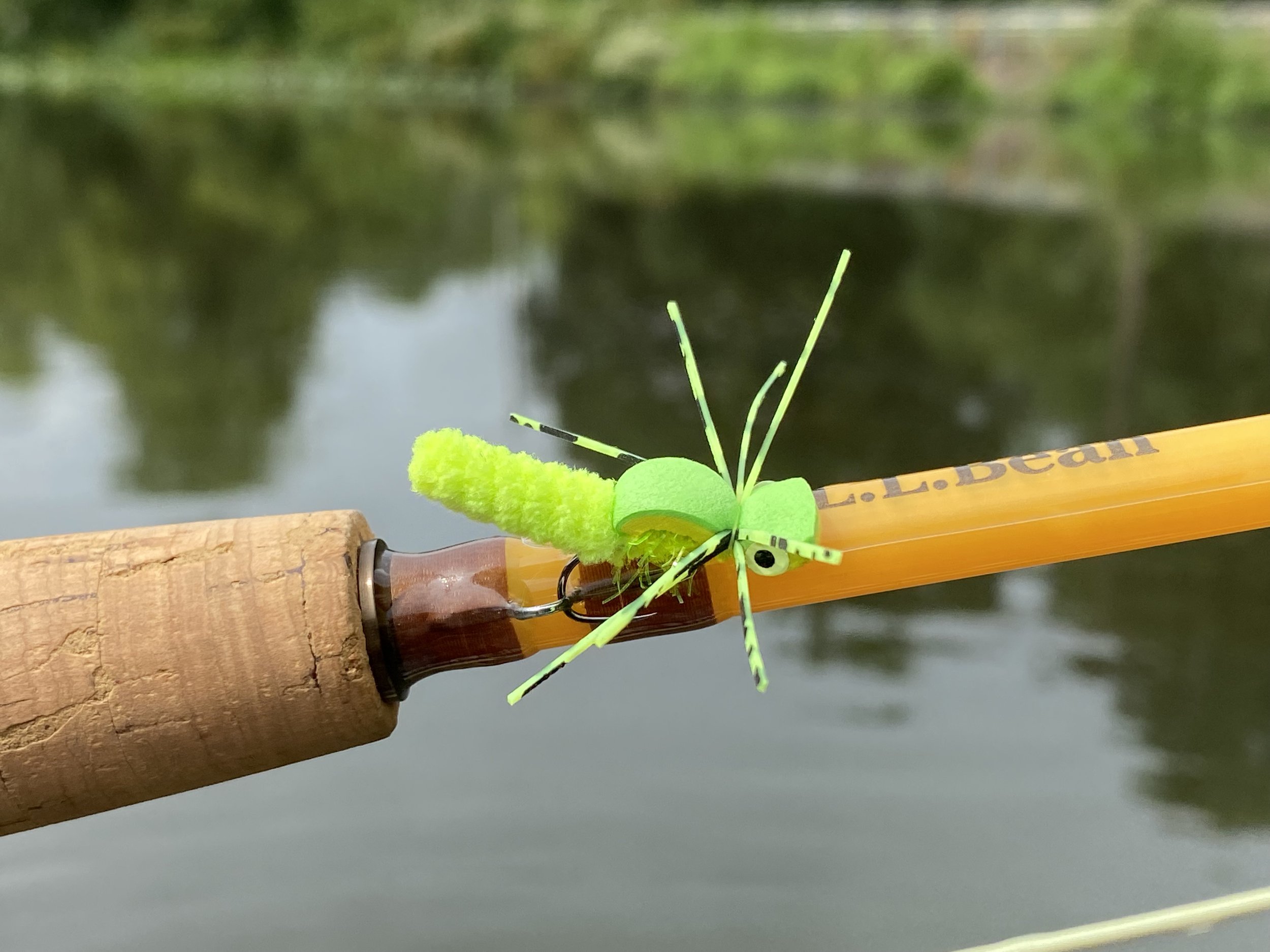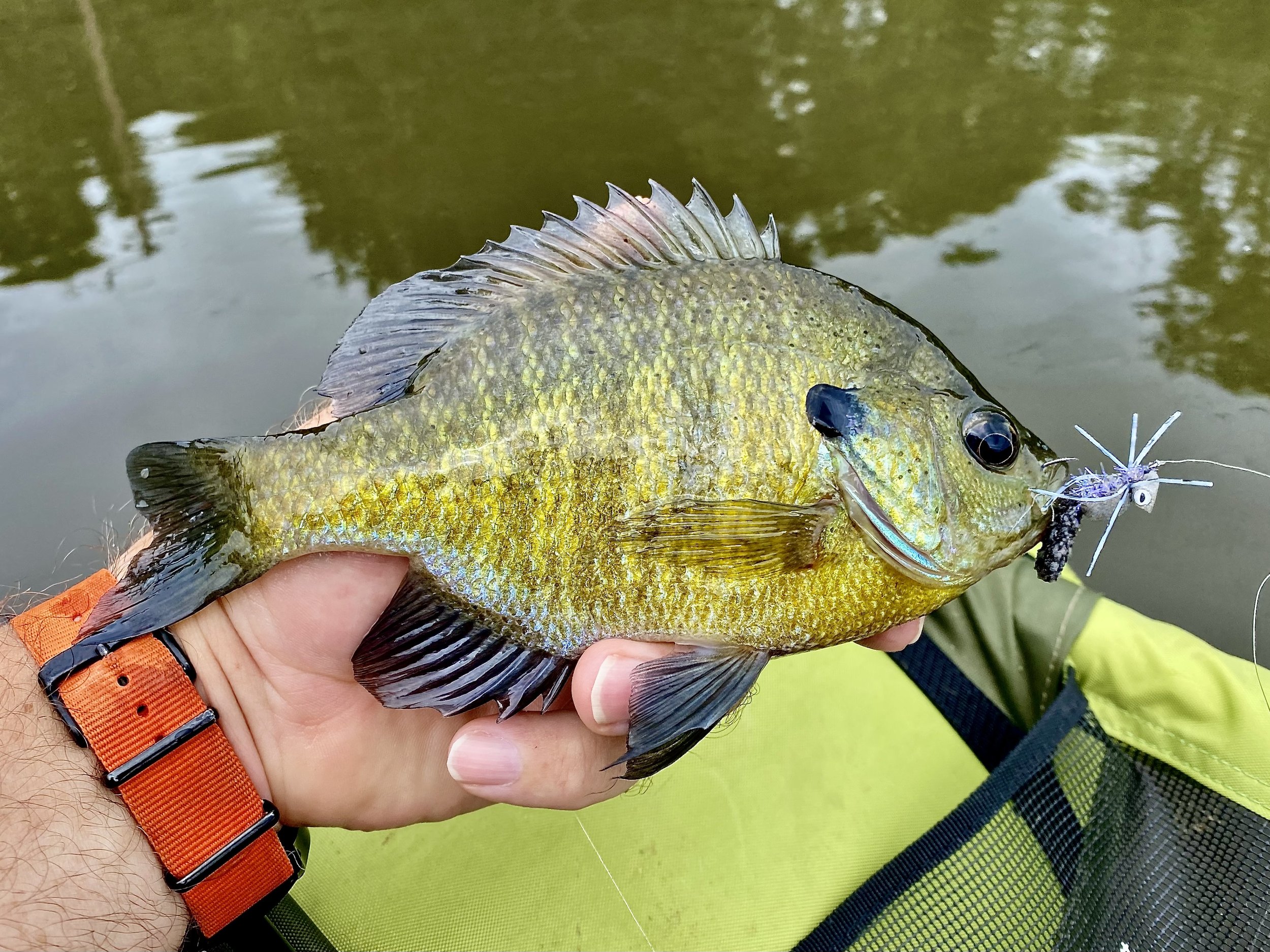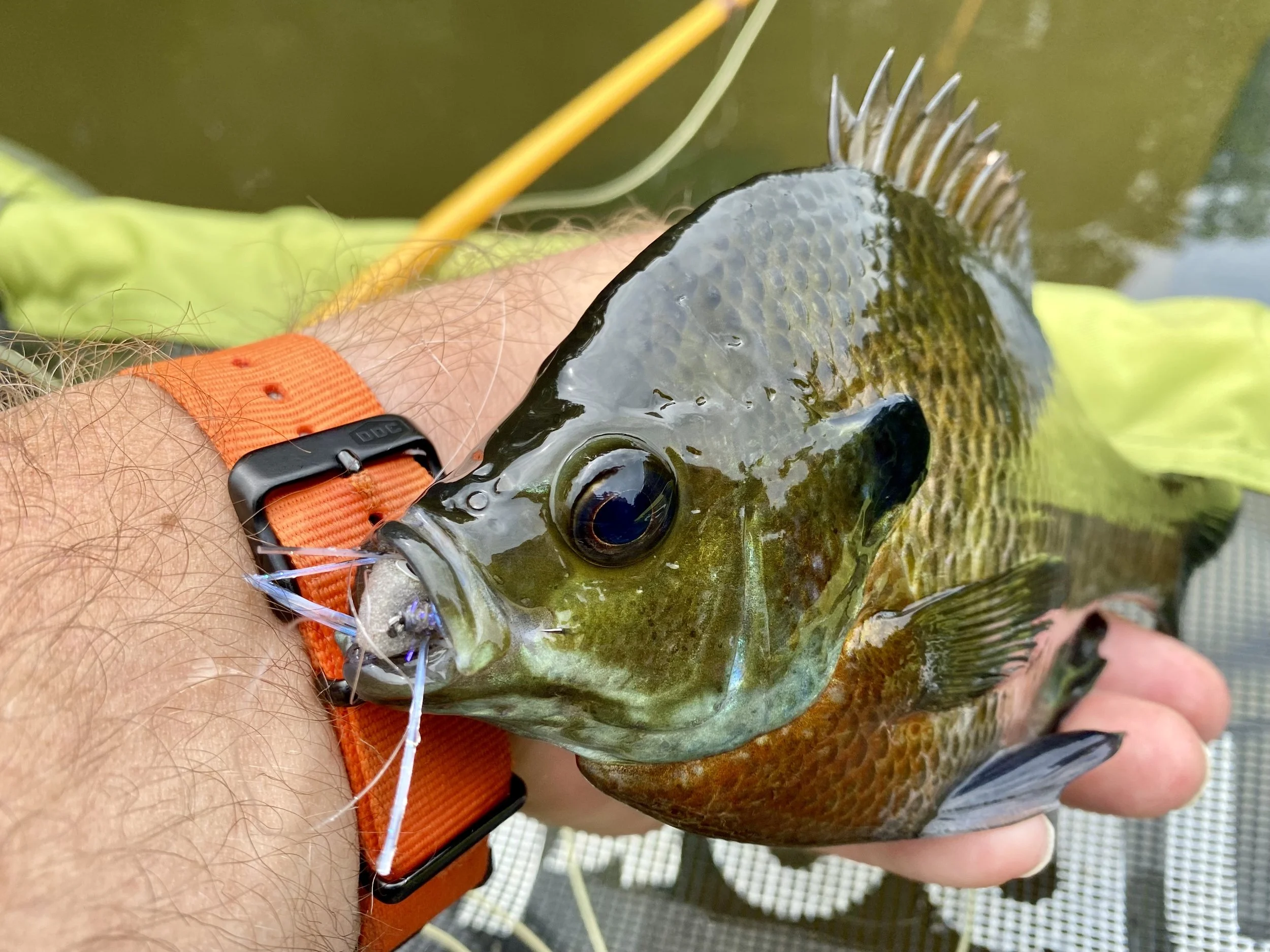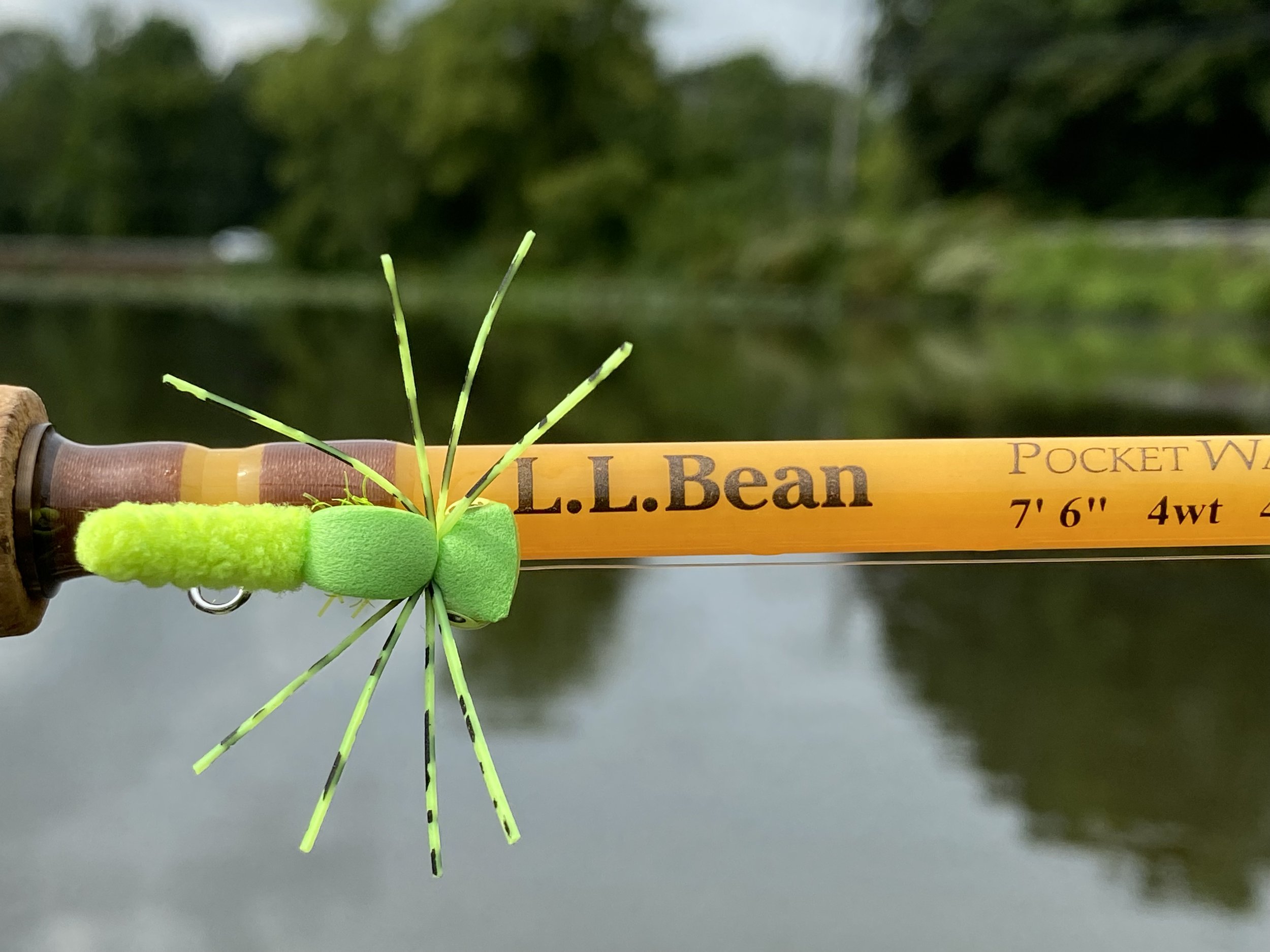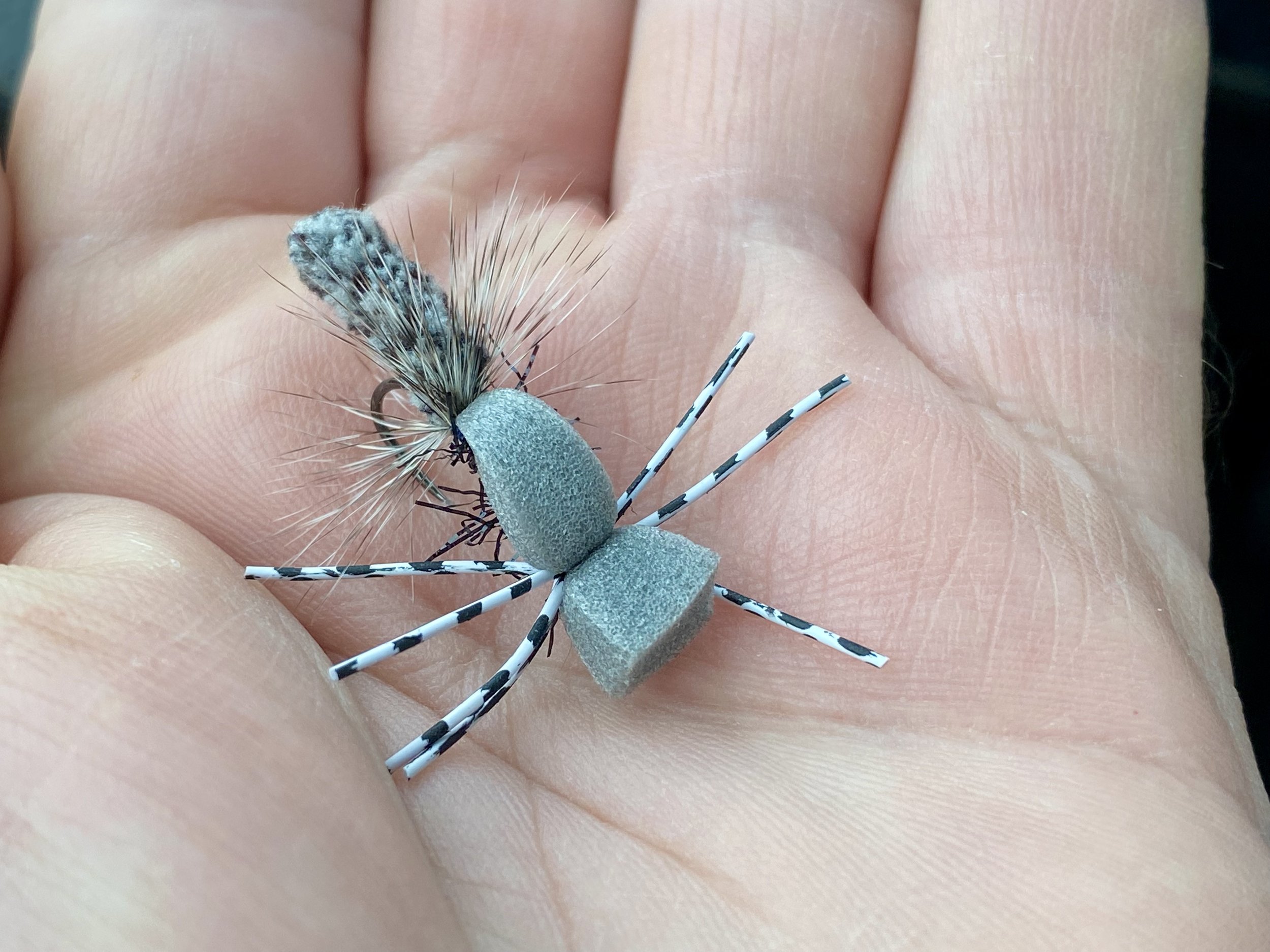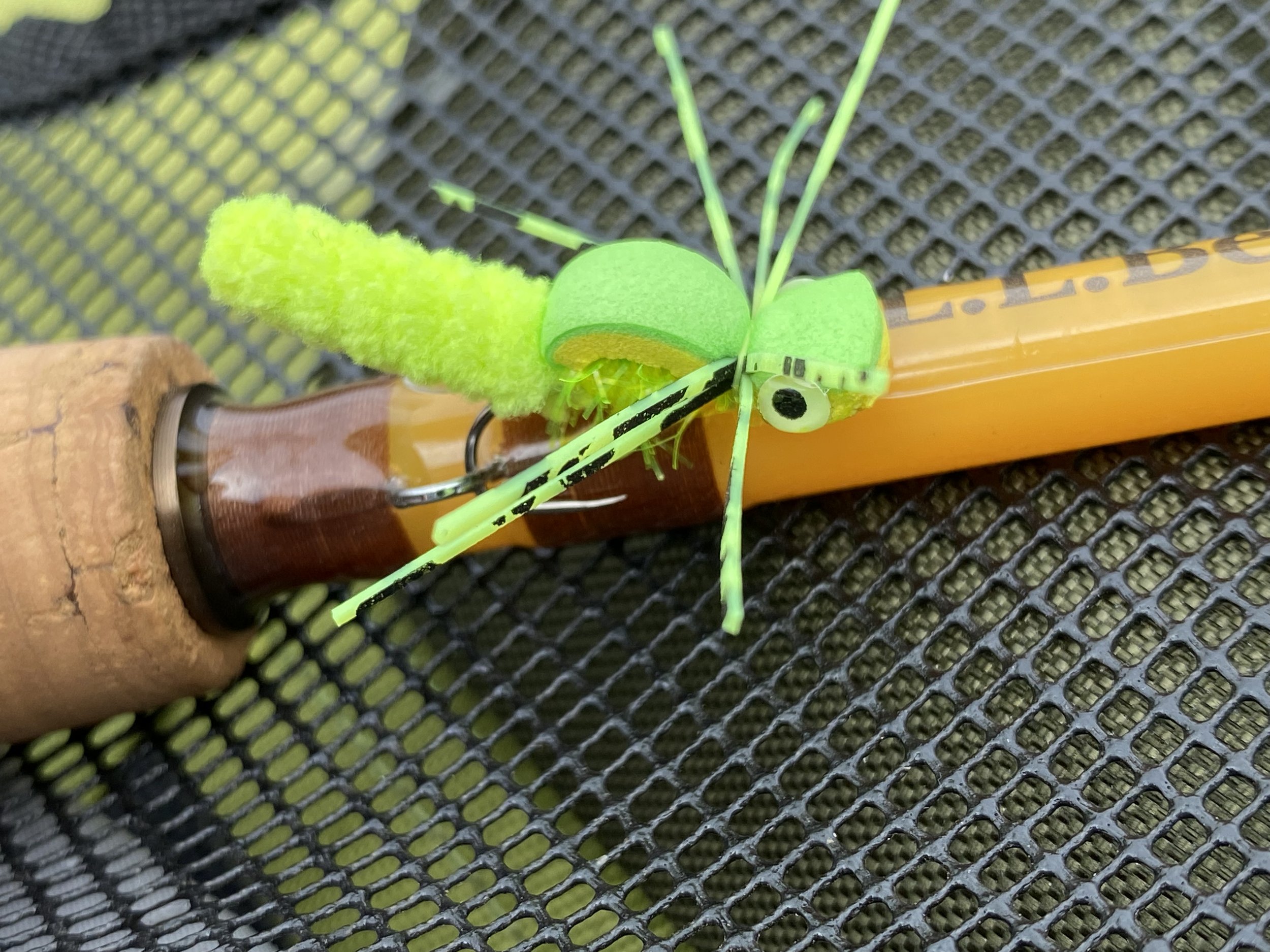Flies using dust mop material have been around for years now. Mop flies are embraced by some and scorned by others. The argument about them still rages, but the one thing that cannot be disputed is that the flies tied using mop material catch fish, a lot of fish! I think part of the argument against these flies is that quite often, the fly tier merely lashes the mop to a hook and calls it done; maybe if they are feeling ambitious, they will add some dubbing as a head or perhaps a bead. That is all you need at times, but you can use this versatile material in many ways.
The mop fiber tail is irresistible to big panfish and bass!
What makes this material so attractive to the fish? I believe it has to do with how the mop fiber behaves in the water. When wet, the mop material comes alive. The fleshy appendage of mop material hanging off of the back of the hook moves very seductively in the water - the fine individual fibers of the mop breath life into any fly pattern. As a bonus, fish hold onto flies made of this material a little longer than hard-bodied flies.
A mopper?
Mop fibers on surface patterns are nothing new. Adding mops to popper and hopper imitations has proven very successful, so why not a gurgler? Over the last season, I experimented with a few "mop gurglers" and found they fished very well. They float low in the water, a feature I like in a surface pattern, and that tail made of a mop fiber provided a lot of movement. Maybe the only downside is the tail material absorbs water making the fly a little heavy for light two and three-weight rods.
Bluegills had no problem taking these big flies off the surface.
Because of the water absorption issue, I opted for thicker foam when tying this pattern, mostly 3 to 4.5 millimeters. Laminated foam works excellent here as the double layers add more floatation. I also like the 3.5mm and 4.5mm Flat Foam from Semperfli. This foam is extremely light and very buoyant but compresses down to nothing. Because of the size of the mop fibers, I tied most of these flies on wide gap size six and eight hooks. I tied up some tiny Mop Gurglers using some tiny fibers I found and some beefy size-two and four flies for bass with some thumb-size mops someone had given me. To provide some flash and movement, Semperfli Straggle String, Legs, and Chenille were used for an underbody depending on the size of the fly. Of course, every respectable topwater warmwater fly needs some eyes and rubber legs.
The Mop Gurgler’s profile is very reminiscent of the shape of a dragonfly.
One thing that stood out about the Mop Gurgler is that if made produced a very realistic adult dragonfly profile. The pattern did very well on mid-summer days when the giant insects lumbered around in their erratic flights. One day in particular, when large grey dragonflies with black and white wings were out and about, a solid grey Mop Gurgler did very well on bluegills and especially well on small largemouth bass. Unfortunately, these bass seemed to be wasting a lot of energy trying to eat these insects, most of the time unsuccessfully. The water's surface was constantly being broken by their forms coming out of the water like little green Polaris missiles.
The solid grey version of the Mop Gurgler has earned a permanent spot in my dragonfly box.
Some experiments never earn a permanent place in my warm water fly boxes. The Mop Gurgler did. I tucked a few away with my dragonfly imitations and a few more in my small stream smallmouth bass box. The flies will see a lot of use in the seasons to come.
I have used every conceivable material for tails on gurglers, and I have experimented with mops on many other flies, so I had no qualms about using a mop fiber here. In the end, it produced yet another successful variant of this legendary pattern developed by the late, great Jack Gartside.
The Mop Gurgler with Yellow and Chartreuse laminated foam.
Pattern Recipe:
Hook: Firehole 718 (10-4) base the hook size on the size of mop you are using
Thread: Semperfli Classic Waxed 6/0
Tail: Mop fiber in the color of choice
Underbody: Semperfli Straggle String, Legs or Chenille
Body: 2mm/1mm Laminated foam, 2mm/2mm Laminated Foam, 3mm or Semperfli Flat Foam (3.5mm or 4.5mm) in the color of choice
Legs: Silicon or Round Rubber in the color of choice
Eyes: 2mm-6mm Flymen Fishing Co. Dragon Eyes (optional)
